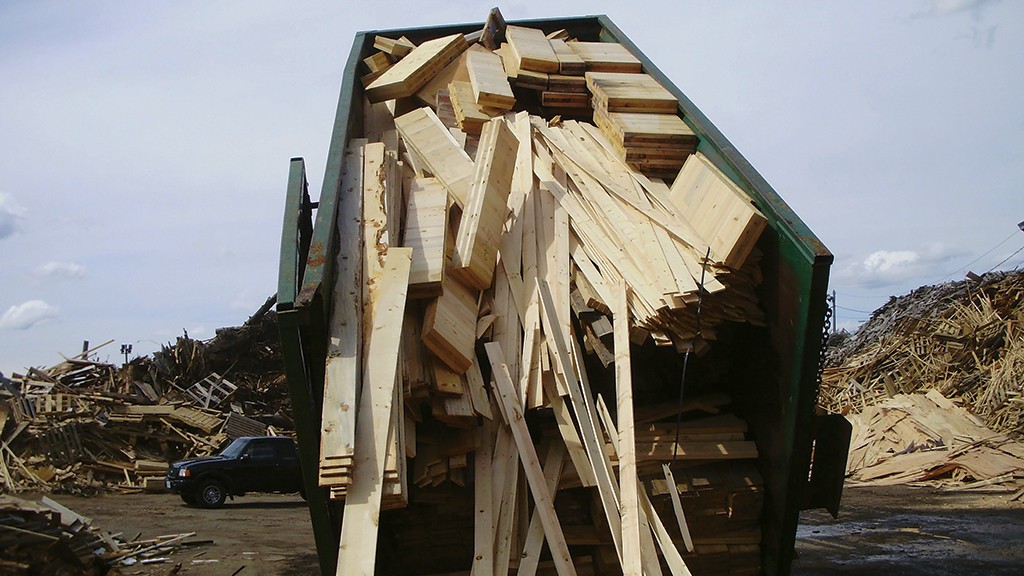
Canada is primed to turn a corner on wood waste recycling. By doing so, it can make a positive and sustainable impact that benefits all waste wood producers and wood recycling facilitators. It's an ambitious vision. According to Jim Donaldson, founder and CEO of the Canadian Wood Waste Recycling Business Group, it requires collaborative action from all levels of government in the form of effective policies and support.
"The bottom line is that all post-consumer waste wood is a hundred percent recyclable," he says. "Anything we can do to encourage and enable waste wood recycling brings positive economic, social and environmental outcomes."
The challenge, however, is that while players in the Canadian wood sector may be on board with finding new applications for their waste, for the most part they lack the means and financial incentives. Donaldson says regions like Metro-Vancouver, B.C., have implemented measures such as prohibitions on wood waste burning or landfilling to push the industry to wood waste recycling. However, other provinces still have a long way to go.
"I would estimate that less than 18 percent of manufactured, post-consumer C&D (Construction and Demolition) wood waste is recycled in Ontario, which is a huge missed opportunity," he says, adding that this is in spite of the fact that there's no shortage of alternatives to landfilling wood waste.
The three main reuse channels for wood waste
Re-processing: The process of grinding, shredding, chipping, hammer-milling and/or screening used end-of-life wood into a reusable product format for sale into developing reuse markets. Currently, potential reuse markets include road or trail base, landfill cover, animal bedding, water conservation material, composting and many more.
Remanufacturing: Using stationary or portable wood sawmill systems to remanufacture used or unwanted off-cuts, C&D wood waste, smaller mill-grade trees, bug-infested trees and other items destined for the landfill. Potential remanufactured wood product end markets include new building materials, furniture, flooring, roofing, beams and other construction products.
Barn wood: Dismantling, collecting and repurposing barn wood material for retail applications such as building products, flooring, furniture and other consumer wood products.
Identifying opportunities in wood waste
There is no one-size-fits-all national framework for wood recycling. Each jurisdiction has its own opportunities and reuse markets, as well as partners that must first be identified and engaged. For its part, the Canadian Wood Waste Recycling Business Group has numerous strategies and frameworks for establishing closed-loop recycling processes and is actively encouraging Canada's federal, provincial and municipal governments to support the development of the Canadian wood recycling industry.
"The process begins by going into a region and identifying how much wood waste is produced, how it can be repurposed, and who within the region can make it possible," he explains. "At the end of the day, it's a feasibility study that is needed first, with the ultimate goal of finding the most economic reuse market products for a given region, whether that's animal bedding, construction materials or retail materials. Because there's a reuse for everything, you just need to be willing to look and start the conversation."
Feasibility studies are definitely an essential step. Another is for governments at federal, provincial and municipal levels, to implement policies and incentives that spur wood waste recycling practices.
"For wood recycling facilitators to make a sustainable business, they need to obtain a recycling tipping fee of around $55 per metric ton, and landfill wood waste disposal costs need to be around a minimum of $70 per metric ton," explains Donaldson. "That way, it makes more financial sense to recycle waste wood materials into a reusable format and create a commodity value.
"We have everything we need to do this, but we need to catch up, especially now as the mass timber industry is ramping up and creating all these reuse applications. More than that though, it's our responsibility as tenants of this planet to make sure we're making the best use of this completely reusable natural resource."
Matt Bradford is a writer for Wood Industry Magazine.



